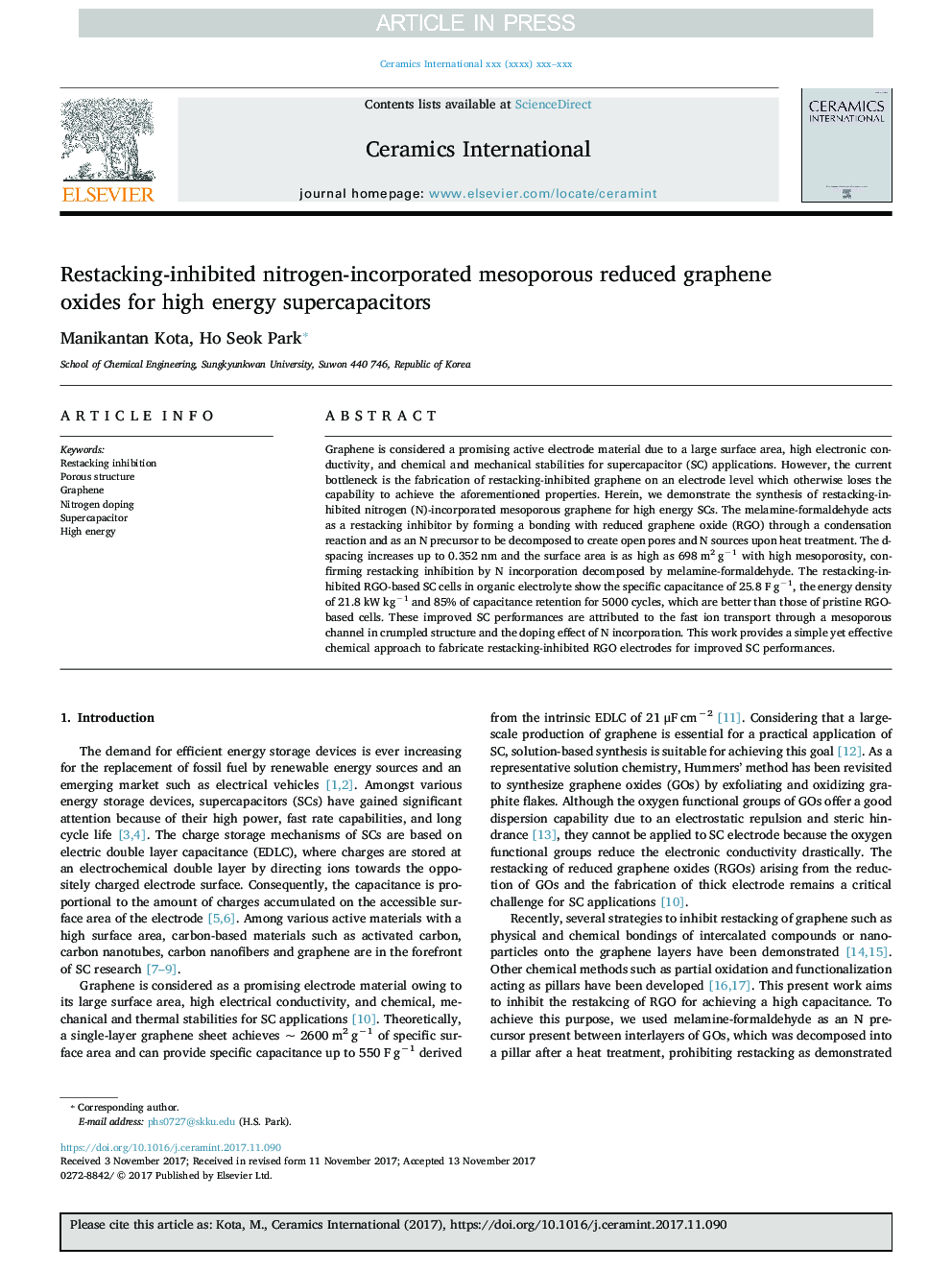| Article ID | Journal | Published Year | Pages | File Type |
|---|---|---|---|---|
| 7888912 | Ceramics International | 2018 | 6 Pages |
Abstract
Graphene is considered a promising active electrode material due to a large surface area, high electronic conductivity, and chemical and mechanical stabilities for supercapacitor (SC) applications. However, the current bottleneck is the fabrication of restacking-inhibited graphene on an electrode level which otherwise loses the capability to achieve the aforementioned properties. Herein, we demonstrate the synthesis of restacking-inhibited nitrogen (N)-incorporated mesoporous graphene for high energy SCs. The melamine-formaldehyde acts as a restacking inhibitor by forming a bonding with reduced graphene oxide (RGO) through a condensation reaction and as an N precursor to be decomposed to create open pores and N sources upon heat treatment. The d-spacing increases up to 0.352Â nm and the surface area is as high as 698Â m2Â gâ1 with high mesoporosity, confirming restacking inhibition by N incorporation decomposed by melamine-formaldehyde. The restacking-inhibited RGO-based SC cells in organic electrolyte show the specific capacitance of 25.8Â FÂ gâ1, the energy density of 21.8Â kWÂ kgâ1 and 85% of capacitance retention for 5000 cycles, which are better than those of pristine RGO-based cells. These improved SC performances are attributed to the fast ion transport through a mesoporous channel in crumpled structure and the doping effect of N incorporation. This work provides a simple yet effective chemical approach to fabricate restacking-inhibited RGO electrodes for improved SC performances.
Related Topics
Physical Sciences and Engineering
Materials Science
Ceramics and Composites
Authors
Manikantan Kota, Ho Seok Park,
